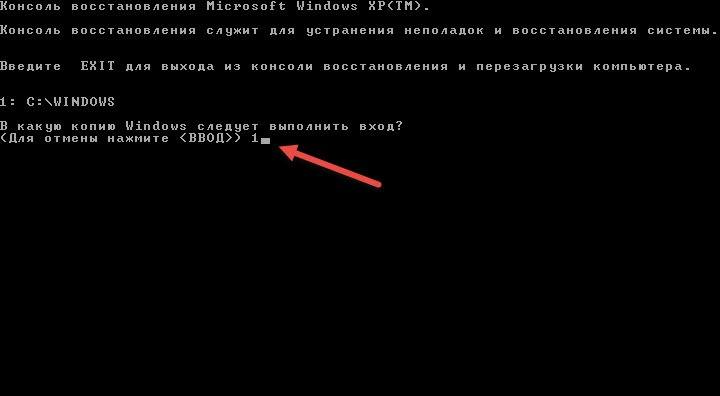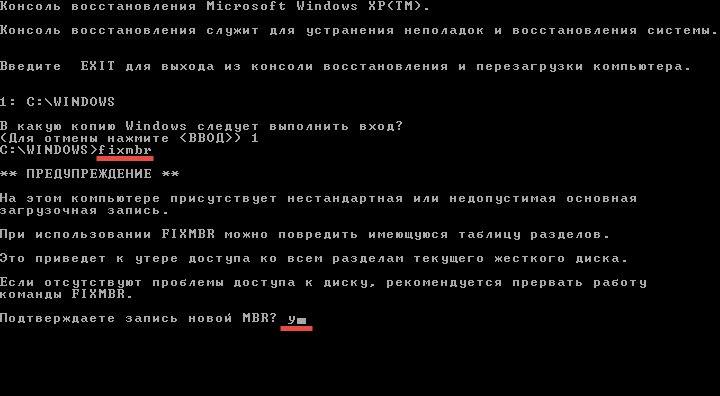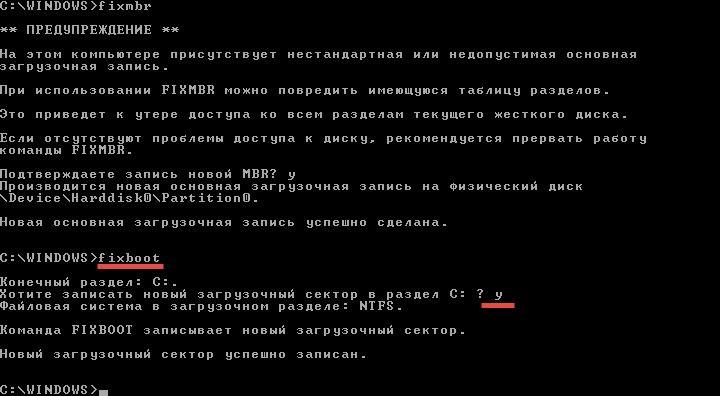- Как исправить ошибку «error loading operating system» в Windows XP, 7, 8, 10
- Что за ошибка, из-за чего возникает
- Проверка БИОС
- Использование командной строки
- Восстановление загрузчика
- Error loading message for Windows Vista
- Getting error message » error loading c:\WINDOWS\uzejiqalyheq.dll » during startup
- Replies (3)
- How do I remove RUNDLL error loading message c:\windows\arekekegas.dll ?? Please help!!__runing Windows XP Home
- Replies (13)
Как исправить ошибку «error loading operating system» в Windows XP, 7, 8, 10
Нередко пользователи Windows (особенно Windows XP) могут сталкиваться с проблемой, когда, пытаясь загрузить операционную систему (ОС), возникает надпись «error loading operating system» на черном фоне. Перезагрузка компьютера (ПК) в данном случае обычно не помогает. Нужно знать, что означает данная ошибка, какими способами можно её исправить, о факторах, которые вызывают подобную проблему.
Что за ошибка, из-за чего возникает
Обычно «Error loading operating system» в Windows XP, 7, 10 возникает при попытке запустить ПК, в момент установки или загрузки уже установленной системы. Перед пользователем появляется чёрный экран с единственной строкой с сообщением о данной неисправности (можно перевести как «ошибка загрузки ОС»), и загрузка прекращается. Перезагрузка ПК, как правило, приводит только к повтору ситуации.
Факторами возникновения ошибки могут стать:
- Старая версия БИОС не поддерживает имеющийся размер HDD, т. е. объём диска чересчур большой для текущего BIOSа;
- Неправильные настройки диска, прописанные в БИОС;
- Загрузочный разделHDD повредился (по причине, например, перепадов напряжения, ошибок записи, воздействия вирусов). В этой ситуации ОС не способна получать доступ к требуемым файлам и вынуждена приостановить загрузочный процесс.
Проверка БИОС
Сначала потребуется осуществить проверку последовательности загрузки BIOS, удостоверившись в том, что HDD является приоритетным. В ином случае, надо поменять порядок вручную. Делается это так:
- войдя в БИОС, спуститься чуть ниже и выбрать «StandartCMOSFeatures»;
- отыскать HDD и спуститься к нему, нажать «Enter»;
- отобразятся дополнительные настройки HDD. Нужно нажать на «AccessMode» и выбрать «Large», сохранить изменения и выйти из BIOS с помощью F10.
Использование командной строки
В современных Windows (начиная с 7 версии) имеется команда «Bootrec». Чтобы устранить ошибку загрузки операционной системы нужно набрать определённые операторы в командной строке, далее нажимая «Enter» после каждого вводим:
- bootrec /FixMbr;
- bootrec /ScanOs;
- bootrec /rebuildBcd.
- bootrec /FixBoot.
Потребуется перезагрузка ПК.
В Windows 7 следует нажать комбинацию Shift+F10 в окне выбора языка операционной системы.
В Виндовс 8 и 10 нужно выбрать «Восстановление системы», в окне установки.
Восстановление загрузчика
Иногда проблему вызывает поврежденный загрузчик. Исправить ситуацию можно следующим образом:
- Потребуется сделать загрузку с установочного диска и зайти в командную строку. Выбрать Windows, которую нужно восстановить. Далее надо нажать «Enter».
- Затем вводится команда «fixmbr». Отобразится надпись, сообщающая о том, что вероятно повредились таблицы разделов. Но, так как Виндовс не способна загрузиться, можно ввести «Y», чем будет подтверждён пуск процесса.
- Прописать команду Fixboot. Снова возникнет сообщение: «хотите произвести запись нового загрузочного сектора в раздел C:?». Нужно нажать«Y» и подтвердить.
- Прописав «Exit», нужно снова войти в БИОС и изменить приоритет загрузки с привода на HDD, и перезагрузить ПК.
Error loading message for Windows Vista
The actual message is:
Error Loading: C:\Windows\system 32\sshnas.dll
The specific module could not be found.
Malware — make sure its gone — be very thorough as it is tough to remove and can be accompanied by others.
To remove that error message see the next message below.
Download malwarebytes and scan with it, run MRT, and add Prevx to be sure it is gone. (If Rootkits run UnHackMe)
Download — SAVE — go to where you put it — Right Click on it — RUN AS ADMIN
Run the Microsoft Malicious Removal Tool
Start — type in Search box -> MRT find at top of list — Right Click on it — RUN AS ADMIN.
You should be getting this tool and its updates via Windows Updates — if needed you can download it here.
Download — SAVE — go to where you put it — Right Click on it — RUN AS ADMIN
(Then run MRT as above.)
also install Prevx to be sure it is all gone.
Download — SAVE — go to where you put it — Right Click on it — RUN AS ADMIN
If needed here are some online free scanners to help
Also do these to cleanup general corruption and repair/replace damaged/missing system files.
Run DiskCleanup — Start — All Programs — Accessories — System Tools — Disk Cleanup
Start — type this in Search Box -> COMMAND find at top and RIGHT CLICK — RUN AS ADMIN
Enter this at the prompt — sfc /scannow
How to analyze the log file entries that the Microsoft Windows Resource Checker (SFC.exe) program
generates in Windows Vista cbs.log
http://support.microsoft.com/kb/928228
Run checkdisk — schedule it to run at next start and then Apply OK your way out then restart.
If any Rootkits are found use this thread and other suggestions. (Run UnHackMe)
After the above and you are sure its gone if you still have bootup error messages :
How to troubleshoot a problem by performing a clean boot in Windows Vista
http://support.microsoft.com/kb/929135
How to Check and Change the Startup Programs in Vista
http://www.vistax64.com/tutorials/79612-startup-programs-enable-disable.html
Hope this helps.
Rob — Bicycle — Mark Twain said it right.
Was this reply helpful?
Sorry this didn’t help.
Great! Thanks for your feedback.
How satisfied are you with this reply?
Thanks for your feedback, it helps us improve the site.
How satisfied are you with this reply?
Thanks for your feedback.
To remove the error message — Its probably being called for in your startup group.
How to troubleshoot a problem by performing a clean boot in Windows Vista
http://support.microsoft.com/kb/929135
How to troubleshoot performance issues in Windows Vista
http://support.microsoft.com/kb/950685
Optimizing Microsoft Windows Vista Performance
http://support.microsoft.com/kb/959062
To see all that is loading bootup — wait a few minutes without doing anything — then Right Click TaskBar —
Task Manager — take a look at Appplications — Processes — Services — this is a quick reference (if you have
a little box on Lower Left — Show for All Users then check that).
A quick check to see which are loading is Method 2 there — using MSCONFIG then post a list of those here.
———————————————————————
Getting error message » error loading c:\WINDOWS\uzejiqalyheq.dll » during startup
Original title: error loading c:\WINDOWS\uzejiqalyheq.dll on a popup
have xp system and when starting computer the error message above pops up. also in internet explorer costant pop ups stating error loading dll which locks up the program running until the pop ups are closed
Replies (3)
Were there any changes (hardware or software) made to the computer prior to the issue?
To help troubleshoot error messages and other issues, you can start Windows XP by using a minimal set of drivers and startup programs. This kind of startup is known as a «clean boot.» A clean boot helps eliminate software conflicts.
Note : Follow step 4 to reset the computer to start as usual after the clean boot process.
Hope this information helps.
Was this reply helpful?
Sorry this didn’t help.
Great! Thanks for your feedback.
How satisfied are you with this reply?
Thanks for your feedback, it helps us improve the site.
How satisfied are you with this reply?
Thanks for your feedback.
Almost definitley a virus. Do you get the same error in safe mode? Either way you need to remove with a McAfee stinger or malwarebytes. probably both.
Was this reply helpful?
Sorry this didn’t help.
Great! Thanks for your feedback.
How satisfied are you with this reply?
Thanks for your feedback, it helps us improve the site.
How satisfied are you with this reply?
Thanks for your feedback.
You need to remove the referenced entry so Windows stops trying to load or run the file. It may or may not be in the registry but you can find it. Autoruns (see below) will find the item no matter where it is.
You need to be sure to fix the problem and not just fix the symptom of the problem by simply relieving your system of the displaying message — that is not a fix (there is a difference).
No matter what else you are using for malicious software protection, do this:
These full scans can take a long time, but you really need to run them. SAS will probably just report a bunch of Internet tracking cookies, but you can delete those. Once you have done at least one full scan, you can do the quick scans in the future to save time and save the full scans for when you have more time or are really suspicious of a system infection.
They can be uninstalled later if desired.
In 1985, there were 11 known computer viruses. Today, there are more than1,122,311 and new threats are detected every day. Always update your virus definitions before performing a scan.
I am really curious to understand whey these Microsoft engaged Support Engineer «experts» do not know how to relieve a system of this common issue, but that’s the way it is.
How do I remove RUNDLL error loading message c:\windows\arekekegas.dll ?? Please help!!__runing Windows XP Home
How do I remove RUNDLL error loading message c:\windows\arekekegas.dll ?? Please help!!
runing Windows XP Home
Replies (13)
* Please try a lower page number.
* Please enter only numbers.
* Please try a lower page number.
* Please enter only numbers.
Chances are high that this is a malware file. Either you uninstalled the malware program or your antivirus/antispyware program did. In any case, a reference was left to the file in Startup. You can remove the reference by managing your Startup.
Because you had one piece of malware, the chances are also high that you had others. It would be a good idea to scan. I recommend downloading and installing MalwareBytes’ Antimalware (MBAM) fromhttp://www.malwarebytes.org . The program is free. (There is a paid version but you don’t need to buy it to remove malware.) For more thorough scanning steps seehttp://www.elephantboycomputers.com/page2.html#Removing_Malware
Manage Startup (Make sure you do the malware scanning first!):
(for XP) Start>Run>msconfig [enter]
This brings up the System Configuration Utility. Look on the Startup tab and find the probable culprit. Uncheck the box next to its name, Apply and OK out. You don’t need to restart immediately, but the next time you do you’ll get a dialog saying you’ve used the Utility. Just tick the box that says in effect, «don’t bother me about this again».
How to Troubleshoot By Using the Msconfig Utility in Windows XP — http://support.microsoft.com/?id=310560
The free Autoruns program is very useful for managing your Startup — http://www.microsoft.com/technet/sysinternals/default.mspx
MS-MVP — Elephant Boy Computers — Don’t Panic!
5 people found this reply helpful
Was this reply helpful?
Sorry this didn’t help.
Great! Thanks for your feedback.
How satisfied are you with this reply?
Thanks for your feedback, it helps us improve the site.
How satisfied are you with this reply?
Thanks for your feedback.
A «Cannot find. «, «Cannot start. «Cannot load. «. «Could not run. » Cannot run» «Error loading. » or
«specific module could not be found» message at startup is usually related to malware that was set to run at startup but
the referenced file(s) has been deleted after a malware scan leaving behind a registry entry pointing to a file
that does not exist.
It could be from a malicious software removal or an uninstalled application. The entry may have a curious
looking name since it was probably generated at random when the malware was installed.
Windows is trying to load this file but cannot locate it since the file was mostly likely removed during a scan
for malicious software. However, an associated orphaned startup parameter or registry entry remains and is telling
Windows to load the file when you boot up or login.
You need to remove the referenced entry so Windows stops trying to run the file. It may or may not be in the
registry. Autoruns (see below) will find the item no matter where it is.
If you just locate and uncheck the item in msconfig, that disables the item but does not remove the reference to
the bogus startup item from your computer. The msconfig program is not a startup manager, it is a troubleshooting
tool. Disabling things in msconfig to put a stop to the messages and thinking your problem is resolved is short
sighted and leaves behind a sloppy XP configuration.
If you are comfortable editing the registry you can search for and remove the reference from or remove it using a
popular third party tool called Autoruns.
Before making any changes to your registry by hand or with third party tools, be sure to make a backup of the registry
first. There is no undo or quit without saving option in regedit.
Here is a link to a popular registry backup tool:
Autoruns does not install anything on your computer. It will display all of the startup locations where the reference
might be so you can disable it or delete it completely. Here is the download link for Autoruns:
Launch Autoruns.exe and wait for it to finish populating the list of entries.
When Autoruns is finished scanning your system, it will say «Ready» at the bottom left corner. Autoruns can be a
little intimidating at first if you have never see it before since it displays a lot of information. You are really
only interested in a couple sections.
The problem item is usually in the usually the system startup or user startup entries so click the Logon tab
and locate the entry.
Scroll through the list and look for a startup entry related to the file(s) in the error message.
If you don’t find it in the Logon tab, look for it in the Everything tab.
Right-click on the offending entry and choose to delete it. If you are not sure what it is, you can disable it,
reboot and if the issue is resolved, then delete the offending entry. If you don’t see it in Autoruns you may
have to edit the registry and remove the item from the Startup folder there. Autoruns should display the same
information though.
Since you had or have an infection, follow up with this:
Perform some scans for malicious software, then fix any remaining issues:
Download, install, update and do a full scan with these free malware detection programs:
Malwarebytes (MBAM): http://malwarebytes.org/
SUPERAntiSpyware: (SAS): http://www.superantispyware.com/
They can be uninstalled later if desired.
Reboot your computer and troubleshoot remaining issues. Please vote my posts as helpful so I can get lots of points. I am saving up for a pony! Everybody does not love Raymond.











